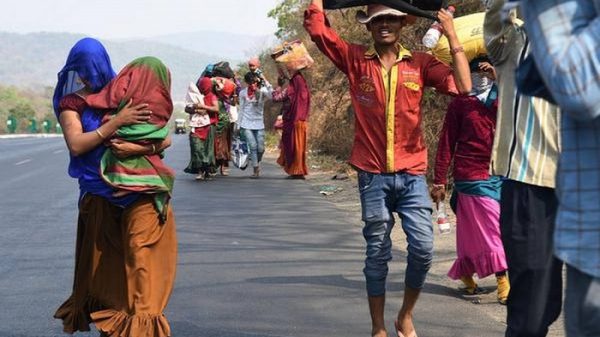India’s inter-state migration touched 9 million annually

- Update Time : Tuesday, July 14, 2020
- 205 Time View

The Covid-19 pandemic may have brought the vulnerability of migrant workers of India into focus but data show more and more people have been moving from their native villages in search of work opportunities to other states over the decades.
The magnitude of inter-state migration in India accelerated from five to six million annually between 2001-11 to nine million annually between 2011-16.
Urban population in India grew from 286.1 million in 2001 to 377.1 million in 2011 which constitutes 31.14 percent of the total population residing in 53 urban agglomerations with more than a million people. Nearly 14 percent of this urban population was estimated to be living below the poverty line in 2011-12 with 65.5 million living in slums. India’s urban population is expected to rise to around 606 million by 2030.
These figures are part of a comprehensive voluntary national review report on a wide range of sectors and progress made presented by Niti Aayog at the United Nations High-level Political Forum (HLPF) on sustainable development on Monday.
The report, Decade of Action: Taking SDGs from Global to Local, emphasises how India is focussing on making the SDG monitoring and implementation more localised for better results. It maps India’s progress, challenges and the way forward on various SDG goals ranging from no poverty, zero hunger, good health and gender equality to sanitation, sustainable cities and reducing inequalities.
In the backdrop of the pandemic, Niti Aayog, vice chairman, Dr Rajiv Kumar, asserted that “the role of international cooperation is more critical than ever before.”
Despite the pressure on cities, the report says “migration can, in fact, be turned into a strong economic opportunity by overcoming bottlenecks such as migrants’ lack of access to healthcare, social entitlements, education for children, lack of improvement in skill profile and employability”.
A significant proportion of migrants and the poor in cities are employed in the informal economy which makes them vulnerable, especially in times such as the Covid-19 crisis. The report says that to mitigate the impact on various sectors including migrants both the central government and the states have announced an economic relief package with both short term and long term measures.
The report cites the importance of schemes like “One Nation, One Ration Card” for enabling access to subsidised foodgrains across the country, irrespective of the place of origin of migrants. It highlights the need for a database on migration and labour mobility to keep a tab on the current situation and take corrective measures.
Stakeholders feel labour welfare legislations which focus on safeguarding the livelihoods of those in the informal economy, require renewed impetus in urban centres.
Source: Times of India















